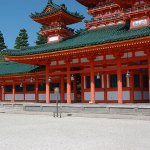Setsubun Date in the current year: February 3, 2026
 In the traditional Chinese calendar, the spring season begins in early February and ends in early May, consisting of six solar terms: Lichun, Yushui, Jingzhe, Chunfen, Qingming, and Guyu. In some East Asian cultures, there are special celebrations dedicated to the beginning of spring. The Japanese one is named Setsubun.
In the traditional Chinese calendar, the spring season begins in early February and ends in early May, consisting of six solar terms: Lichun, Yushui, Jingzhe, Chunfen, Qingming, and Guyu. In some East Asian cultures, there are special celebrations dedicated to the beginning of spring. The Japanese one is named Setsubun.The word Setsubun literally means “seasonal division”, so in a broad sense, it can apply to any of the transitions between two seasons. However, the term usually refers to the spring Setsubun that marks the end of winter and the beginning of spring. The festival is celebrated on February 3 (the last day before Lichun) as part of the Haru Matsuri, Japanese spring festival. It originates from a Chinese folk ritual that was introduced to Japan in the 8th century.
In many cultures, the beginning of spring is associated with the beginning of New Year. Setsubun, for example, used to be thought of as kind of New Year’s eve and so was accompanied by a ritual named mamemaki (bean throwing) that was supposed to chase away all the evil of the past year and protect the household from evil spirits in the year to come.
The ritual is usually performed by the male who was born on the corresponding animal year of the Chinese zodiac, named toshiotoko. If there’s no such man in the household, the head of the household performs the ritual instead. The ritual involves throwing roasted soybeans either out of the door or at a family member wearing a demon (oni) mask, while shouting “Demons out! Luck in!”. Some people still perform the ritual at home, but many prefer to attend shrines and temples for the bean-throwing ceremony.
In Japanese, these roasted soybeans are called fuku mame, which means “fortune beans”. They are believed to drive away the evil spirits that bring disease and misfortune. To bring luck in the year to come, people eat roasted soybeans, one for each year of one’s life. In some areas, people add one more soybean for the year to come. Some families also put up small decorations named hiiragi iwashi on their house entrances. Made of sardine heads and holly leaves, they are believed to protect the household from bad spirits.
Setsubun celebrations are held in many Shinto shrines and Buddhist temples across the country. Priests and guests of honor throw roasted soybeans, sometimes wrapped in silver or gold foil, money, sweets, and other small prizes into the crowd. Festivities held in some of the bigger shrines may involve sumo wrestlers and celebrities; they attract tens of thousands of people and are televised nationally.
Some areas have their specific Setsubun traditions. For example, it is customary in the Kansai region to eat a special type of makizushi (sushi roll) called echo-maki (lucky direction roll). The custom originated in Osaka and has become popular nationwide. In some areas, people sometimes toss peanuts instead of soybeans or use other variations of the demon-banishing chant. For example, in Aizuwakamatsu people shout “Blind the demon’s eyes!”.
- Category
- Religious Holidays, Folk Festivals
- Country
- Japan
- Tags
- Setsubun, Japanese festival, traditional festival, holidays in Japan, spring festival